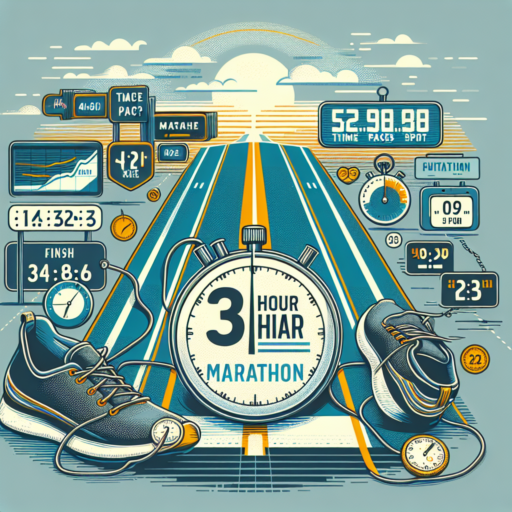What is the average heart rate for a marathon runner?
Understanding the average heart rate for marathon runners offers insights into the impressive endurance and physical fitness these athletes maintain. Generally, the average heart rate of an individual varies significantly based on their fitness level, age, and running intensity. However, during a marathon, a runner’s heart rate typically ranges between 160 to 180 beats per minute (bpm).
Factors Influencing a Marathon Runner’s Heart Rate
The terrain of the marathon, the weather conditions, and the runner’s unique physiology play crucial roles in determining their average heart rate. More seasoned runners often have a lower heart rate due to better efficiency and cardiovascular fitness. It’s important to note that achieving an «average» heart rate depends on many variables, including the runner’s resting heart rate, which for athletes can be as low as 40 to 60 bpm.
Training intensity and pacing strategy also significantly affect a marathon runner’s heart rate. Runners who employ a strategy of starting slow and gradually increasing their pace may experience a more controlled increase in heart rate. Conversely, those who start at a very high intensity might hit higher heart rates early on, potentially leading to exhaustion before the race is over.
Understanding one’s own heart rate zones is crucial for marathon training and performance. Runners often train at various heart rate zones to improve their cardiovascular efficiency, endurance, and speed. By knowing these zones, runners can tailor their training to optimize performance and avoid overexertion, which is key to maintaining a consistent heart rate throughout the marathon.
How to pace a marathon heart rate?
Understanding the dynamics of maintaining an optimal marathon heart rate is crucial for both new and seasoned runners. The key to pacing your marathon with heart rate monitoring lies in finding your aerobic zone and staying within it for the majority of the race. This strategy helps in optimizing endurance and preventing early burnout.
Identify Your Aerobic Heart Rate Zone
Initially, you’ll need to determine your aerobic heart rate zone, which is typically between 70% to 80% of your maximum heart rate. Calculating your maximum heart rate can be done by subtracting your age from 220. Once you have this figure, compute the lower and upper limits of your aerobic zone to guide your pacing strategy.
Monitor Your Heart Rate During Training Runs
Integrating heart rate monitoring into your training runs is essential for learning how to pace yourself during the marathon. Use a reliable heart rate monitor to track your heart rate in real-time, ensuring it stays within your targeted zone. This practice not only familiarizes you with maintaining a consistent pace but also helps in enhancing your aerobic capacity.
Pacing a marathon by heart rate requires patience and discipline, as it’s tempting to start too fast and exceed your aerobic threshold. Keeping an eye on your heart rate and making necessary adjustments during the race can make a significant difference in your overall performance and enjoyment of the marathon. Remember, the goal is to maintain steady effort throughout, avoiding any sudden spikes in heart rate that can lead to fatigue.
What heart rate zone is best for marathon training?
Identifying the optimal heart rate zone for marathon training is crucial for runners who aim to maximize their endurance and performance. This zone varies among individuals, primarily because it’s influenced by factors such as age, fitness level, and running experience. However, many coaches and sports scientists agree that training in the aerobic zone, which is approximately 70-80% of your maximum heart rate, offers the most benefits for marathon preparation.
Training in this aerobic zone ensures that you’re running at a pace that is sustainable and efficient, allowing your body to utilize fat as its primary fuel source. This is essential for marathon runners, as it increases endurance and stamina without overly stressing the body. It’s the intensity level at which you can run long distances and still hold a conversation, indicating that you are not over-exerting yourself.
Besides focusing on the aerobic zone, incorporating sessions that target slightly higher heart rate zones, such as the anaerobic threshold (80-90% of your maximum heart rate), can also be beneficial. These sessions are shorter in duration but higher in intensity and help improve your running economy and speed. Nonetheless, it’s important to approach these higher intensity workouts with caution to prevent burnout and injury.
What is a reasonable marathon pace?
Determining a reasonable marathon pace is crucial for runners, both newbies and experienced marathoners. It’s a balance between maintaining speed without burning out too early. Generally, a reasonable pace is highly personal, depending on a runner’s fitness level, experience, and marathon goals. However, understanding average pace statistics and listening to your body’s signals can guide in setting an achievable target.
For many first-time marathoners, aiming for a pace that corresponds with their long training runs is advisable. Typically, this can range from 9 to 12 minutes per mile for beginners. Experienced runners often target more aggressive paces, primarily based on their previous marathon times and training performance. Engaging in regular speedwork and tempo runs can help refine these pace goals over time.
It’s essential to consider environmental factors and race day conditions, such as weather and course elevation, when determining your marathon pace. A strategy employed by seasoned runners is to start conservatively for the first few miles and gradually increase the pace. By dividing the marathon into smaller segments and setting mini-pace goals, runners can adjust their speed based on how they feel throughout the race, ensuring a consistent and reasonable pace all the way to the finish line.










